Probability
| © 2004 Rasmus ehf |
Probability |
Lesson 2
Repeated probability experiments:
When you toss a coin there are two possible outcomes: 'heads' or 'tails'. Each of these outcomes is equally likely, since there is 1 'head' and 1 'tail' on the coin.
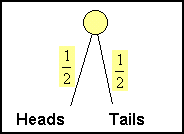
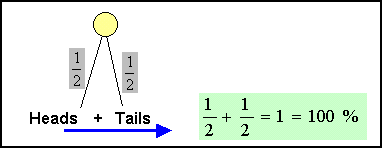
The sum of the possible outcomes is always = 100%
Example 1
If a coin is tossed twice, what is the probability of 'heads' coming up both times?
A tree diagram is one way of showing all the possible outcomes.
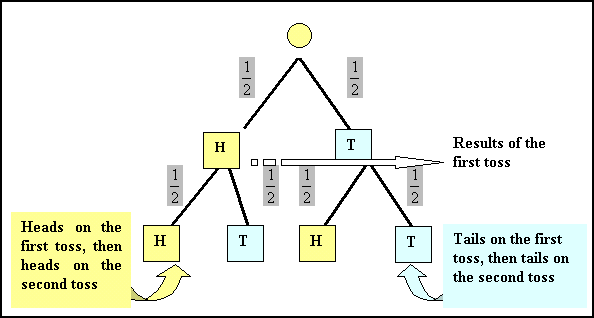
| To calculate the probability of getting 'heads' in both throws | |
| multiply the possible outcomes |
|
The result is the probability of getting 'heads' twice in a row.
Other possible outcomes are calculated in the same way.
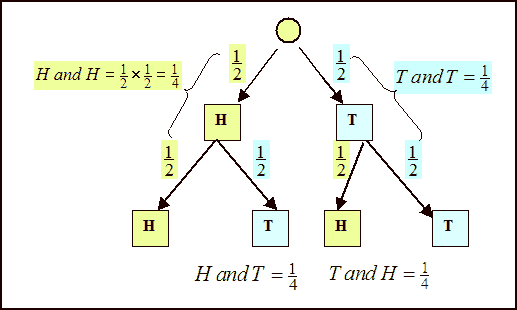
|
The sum of the possible outcomes:
![]()
![]()
You can find the probability of getting 'heads' in one toss and 'tails' in the other by adding the probabilities:
| (H and T) = | |
+ (T and H) = |
or |
Example 2
Stefan was fouled in a basketball game and was awarded two penalty shots. His average for scoring on penalties is 70%. What is the probability that he will score on both shots?
A probability tree can be used to find the answer.
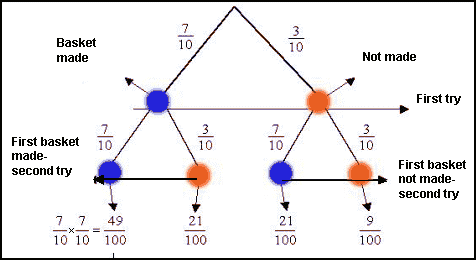
|
The probabilty is |
|
or |
|
The probabilty is |
|
or |
|
| that he will make a basket twice in a row. | that he will not make a basket twice in a row. | ||||||
To check to see if the calculation is correct, you can add the sum of the possible outcomes after the second try:
![]()
Practice these methods and then take Quiz 2 on Probability. Remember to use the Checklist to keep track of your work.